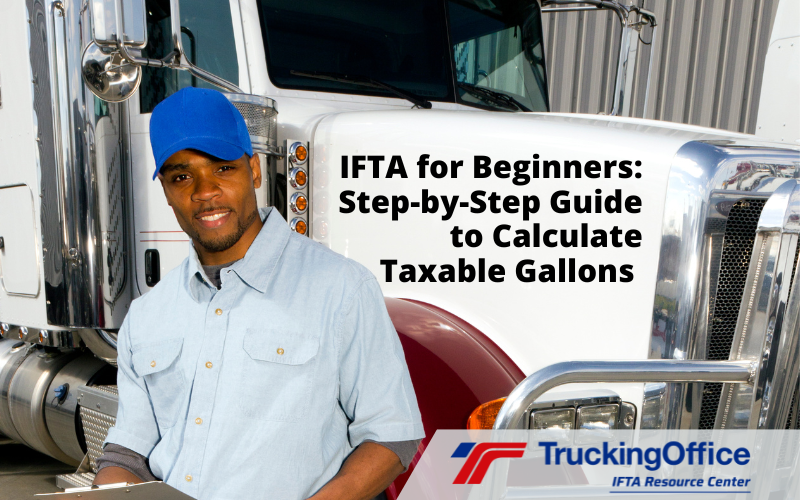If you’re new to trucking, you may be a bit overwhelmed by the many rules and regulations. Not to mention trying to remember the different government agencies that need never-ending reports. Most new drivers, and seasoned pros as well, struggle to understand IFTA. So, don’t let it get you down. This guide should be helpful for you beginners when it’s time to calculate taxable gallons on your IFTA quarterly report. (Don’t forget, we also have the TruckingOffice IFTA Resource Center.)
So, first things first. What is IFTA? The International Fuel Tax Agreement is an agreement between the United States and Canada. The purpose is to simplify the process of collecting and disbursing CMV fuel taxes. Of course, most drivers don’t see anything simple about it at all.
IFTA member jurisdictions include 48 states in the US and 10 Canadian provinces. Any person operating a qualified motor vehicle in two or more jurisdictions must register with the IFTA. Once the application is approved, you’ll receive an IFTA license and decals that allow you to travel in all jurisdictions.
What IFTA Expects from Truckers
Once you have the license and decals, you’re ready to roll. But, you have to remember to file the quarterly IFTA fuel taxes by state, usually at the end of the months of January, April, July, and October. If you file late, underpay, or fail to pay, then the fines, penalties, and interest will take a chunk out of your profits. Also, your license may be revoked until the taxes are current.
Is There an Easy Way to Calculate Taxable Gallons?
Next comes the part most drivers dread – calculating taxable mileage and fuel use. Driver’s use different approaches to meet their IFTA reporting requirements. The 3 methods used most by truckers include:
- Manual recording of mileage and fuel use. You’ll need an accurate record of miles traveled in each jurisdiction in the current quarter. Also, you must be able to provide fuel receipts and know the most recent tax rates for each jurisdiction. Be sure to record odometer readings each time you cross a state border and each time you refuel. Then add up each state’s mileage and multiply by the tax rate. Add those numbers and then you’ll have the amount of tax you need to pay. How good are your records? Are you confident enough to trust them?
- Trip mileage calculator. This tool estimates the miles traveled. You must keep track of every trip you made and note the starting and ending odometer reading for each of those trips. You can record the information on a spreadsheet. But, this method is not accurate and can be time-consuming. Remember, estimated mileage can result in errors on your IFTA report. These errors can result in an audit, fines, penalties, or revocation of your license.
- Trucking management software. A TMS is the easiest method for calculating taxable miles and fuel use. The program can integrate with your ELD to collect the mileage data and provide accurate IFTA fuel use reports. A TMS can also organize other aspects of your business such as invoicing, vehicle maintenance, driver pay, dispatching, and more.
Calculating taxable gallons doesn’t have to be a grim experience. With today’s technology, truckers have advantages never dreamed of by truckers of the past. Tasks that once took days or hours to perform can now be done in minutes. All you need to do is find the right provider for your ELD and TMS, and your job will be easier.
Why TruckingOffice is the Right Choice for Your Business
You’ll find hundreds of options in your search for trucking management solutions. How will you know which is the right one? We’ll make it easy for you to decide. We’re sure our system will enhance your business, so here’s a no-obligation, free trial of our TMS. You’ll discover how TruckingOffice can make IFTA reports easier and help you organize your entire operation to save time and money with fewer headaches.







Trackbacks/Pingbacks